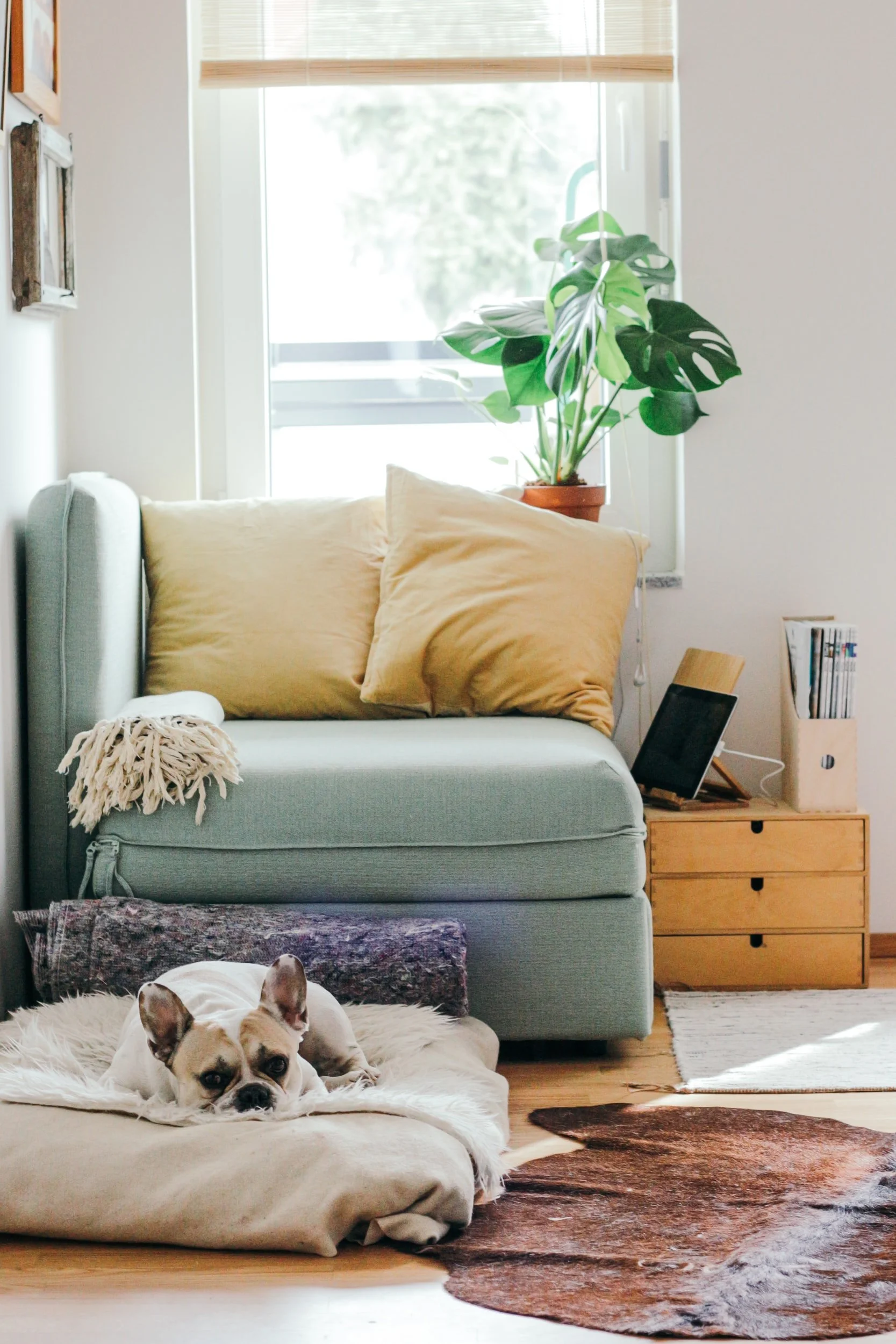Connecting to the environment makes people feel more relaxed in their homes and workplaces. Incorporating nature indoors has become increasingly popular after the pandemic, we are seeing more people decorating their homes with plants and natural materials. The Biophilic Design concept can create a unique look and is excellent for the environment.
Here are some ways biophilic design creates a sustainable space.
1. Plants Can Help Improve Indoor Air Quality
Plants create a beautiful aesthetic by adding a pop of colour to any interior. They’re more than just a pretty face, though — they can also help purify the air. The flowers absorb carbon dioxide and can remove gases.
They also release oxygen so you can breathe easier. Some plants even remove volatile organic compounds (VOCs) found in formaldehyde and benzene (see this article for more on this).
2. The Design Uses Natural Materials
Another concept of biophilic design is the integration of natural materials, so the indoor space mimics the outdoors. Common decor includes wood, bamboo, and cork furniture and flooring. These supplies are naturally found in the environment.
The production process to create these furnishings uses less harsh chemicals that pollute the air. Plus, it prevents the release of carbon dioxide during the manufacturing process. Wood is also a good insulator and can help with energy efficiency.
3. The Open Layout Maximizes Natural Light
The connection between indoor and outdoor spaces creates a more open concept. Also, oversized windows and skylights allow homeowners to enjoy the view. These features permit more natural light to enter, which is ideal because sunlight can give you more energy and boost your mood.
It also limits the need to turn on lights during the day, reducing your electricity usage and carbon footprint. Also, the sunlight warms your home, preventing you from overworking the heater.
The added daylight lets homeowners install solar panels that increase efficiency. Energy efficiency is an essential and cost-efficient solution to reduce the effects of climate change.
4. It Can Reduce the Urban Heat Island Effect
Some people create walls of vegetation when designing their home’s exterior. They also plant more trees, which provide shade and reduce the impact of sunlight. Buildings and roads absorb and reemit the sun's heat.
More vegetation reduces the overheating of populated cities, known as the heat island effect. Another benefit is homeowners can lower their air conditioners and prevent carbon emissions.
5. It Increases Biodiversity
Biodiversity is reduced as new structures are built, especially in cities, but biophilic design can help combat this issue. The trend incorporates native plants and creates a habitat for other animals.
The design can even help us understand the natural movements of plants and animals. Research native plants in your area and add these to your landscape — you can use online plant finder tools to get started.
6. It Reduces the Risk of Flooding
Storms are becoming more prevalent due to climate change, and protecting our homes is essential. Porous materials and green walls are part of biophilic design. This allows water to flow naturally instead of accumulating in rivers.
Permeable materials for your design include pervious asphalt, pervious concrete and interlocking pavers. Rain gardens can also help soak up excess water.
7. It Lowers Our Overall Carbon Footprint
A biophilic design can help reduce carbon emissions. About 5.1 million tons of energy-related carbon dioxide were emitted in 2019. One way to lower this number is using plants that absorb carbon dioxide, so decorate with houseplants and plant trees in your backyard.
Another way to reduce emissions is by emphasizing natural light, which can reduce the demand for artificial fixtures. Enlarge your windows or consider installing skylights.
How to Incorporate Biophilic Design in Your Home
A biophilic interior is visually beautiful and eco-friendly. Here are a few tips for incorporating this style into your space.
Get Plenty of Fresh Air
Open up the windows and add more around the house. This is a simple way to connect with nature and let in more natural light. It can lower anxiety, make the space feel larger, improve ventilation and allow fresh air to circulate. Plus, you can enjoy the sounds of birds chirping in the morning.
Decorate With Plants
Plants are a staple of this trend. They can revamp any room and put you in a positive mood. They can also give you something to take care of if you need to shift your focus. Add them to window sills, tables and shelves.
Extend this theme to the outdoors with plenty of trees and a garden. There are many different plants to choose from. Even if you don’t have a green thumb, consider buying these easy-to-care-for plants:
● Lady palm
● String of pearls
● Pothos
● Mini jade
● Spider plant
Emphasize the Shapes of Nature
Nature is about curves, soft edges and patterns. This contrasts the straight lines and right angles typically found in interior designs. Introduce more curved furniture and arch-shaped doors and windows, and use organic textiles in curtains to add more texture. Also, buy patterned cushions that mimic outdoor elements, such as florals.
How Biophilic Design Creates Sustainable Environments
Biophilic design is a growing trend. Natural elements create a relaxing and energizing space and support the environment by cleaning the air and reducing carbon emissions. Consider how you could incorporate these elements in your next home improvement project.
Rose Morrison is the managing editor of Renovated.com. Her work has been featured on The National Association of Realtors, the American Society of Home Inspectors, and other reputable publications. For more from Rose, you can follow her on Twitter.
She also wrote this artice for us “What are the benefits of Biophilic Design on Healing”.








